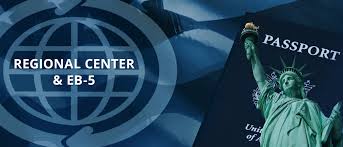How to Select An EB-5 Regional Center to Sponsor Your Project
In 1992, two years after the creation of the EB-5 visa program, the U.S. Citizenship and Immigration Services (USCIS) established the Immigrant Investor Pilot Program. Prior to this program, investors had to directly invest in EB-5 projects and were individually responsible for meeting the job requirements of the USCIS. To obtain U.S. permanent resident status, which is the primary reason foreign nationals pursue EB-5 investments, an EB-5 investor must, by his/her investment, produce at least 10 jobs that last for no less than two years.
Within the framework established in 1992, however, EB-5 regional centers make it easier for investors to meet the job creation requirements set forth by the USCIS by allowing EB-5 projects to include direct, indirect, and induced jobs when calculating job creation figures. In other words, investing in a project through an EB-5 regional center provides investors with a more favorable job creation calculation, which allows EB-5 investors to undertake larger projects with greater “job cushion” than would be feasible in a direct investment.

Direct EB-5 investments can include only direct job creation when determining the number of jobs a project creates. When indirect or induced jobs need to be included in the job creation calculation, investors must work through a USCIS-approved EB-5 regional center. EB-5 regional center sponsorship can be obtained in two ways: the project developer can seek to establish its own regional center, or the developer can work with an existing regional center.
Establishing a New EB-5 Regional Center
To reduce costs, many developers consider applying for regional center status and keeping their projects in-house. The application process, however, is slow and expensive. To gain USCIS approval for a new regional center, applicants must prepare and file Form I-924, Application for New Regional Center Designation under the Immigrant Investor Pilot Program.
The time it takes to prepare this application will vary based on several factors. Compiling all of the required documentation can take months, especially for those who employ separate companies or attorneys to complete the various components of the application individually. Alternatively, a company can engage the services of an EB-5 consulting firm, which could dramatically speed up the process. Here at EB5AN, for example, we can complete an EB-5 regional center application within three weeks. Once an application is submitted, the approval time from the USCIS is about one year—but this approval time also varies. Applications submitted by EB5AN average an approval time of about seven months.

In addition to the time it takes to become a USCIS-approved EB-5 regional center, the costs can likewise be prohibitive. These costs, of course, vary based on the companies, attorneys, or the consultancy firm who complete the documentation, but applying for regional center approval can cost more than $100,000 if you select multiple independent vendors. EB5AN can complete a new regional center application in three weeks, with prices starting at $35,000.
For many developers, the time and capital requirements of the EB-5 regional center approval process motivate them to pursue sponsorship for their projects from existing regional centers.
Working with an Existing EB-5 Regional Center
When seeking a USCIS-approved EB-5 regional center to work with, developers must consider the type and location of their project since every EB-5 regional center is limited to a certain geographic region and specific industry sector. These limitations will, in large part, determine which regional centers a developer will be able to work with on a given project.

EB-5 Regional Center Geographic Considerations
Over time, the geographic regions approved by the USCIS have become smaller, and so newer EB-5 regional centers are likely to have smaller geographic scopes than older regional centers. For instance, some of the older EB-5 regional centers have geographic scopes that span entire states, and in some cases, multiple states. Newer regional centers, on the other hand, tend to have geographic scopes spanning only 10 to 15 counties, and sometimes even less.
An EB-5 project seeking sponsorship by a regional center must, therefore, find a regional center whose geographic scope includes the location of the project. If a project’s location is outside the approved geographic region of a regional center, that regional center cannot automatically sponsor the project. However, if the geographic boundary is close enough that a compelling argument can be made to the USCIS, there is precedent for the expansion of a regional center’s geographic scope as part of an individual EB-5 investor’s I-526 application.
During the earlier stages of the pilot program, regional centers were restricted to operating within preapproved industries defined according to the North American Industry Classification System (NAICS). However, in May 2013, this restriction fell away.
EB-5 Regional Center Diligence
The first step in the due diligence process for a project developer is to determine which USCIS approved EB-5 regional center(s) have the required geographic coverage to sponsor the EB-5 project. The second step is to interview the potential EB-5 regional centers that meet the geographic requirements and determine which regional center operator is the best fit for the project. This vetting process should consider the regional center’s fees, available services, history, reputation, and track record in the EB-5 space. This process is critical as there are hundreds of approved EB-5 regional centers today, but many of the regional center operators are not professional and do not have the infrastructure in place to successfully sponsor EB-5 projects and meet USCIS compliance standards.

Key Questions to Ask When Evaluating an EB-5 Regional Center
- What is the geographic coverage of your EB-5 regional center(s)?
- When was your EB-5 regional center(s) approved by the USCIS?
- How many EB-5 regional centers does your company own/operate?
- Has your EB-5 regional center ever received a Notice of Intent to Deny from the USCIS?
- Have any of the EB-5 investors under your EB-5 regional center(s) been denied on an I-526 filing?
- Have any of the EB-5 investors under your EB-5 regional center(s) been denied on an I-829 filing?
- How many EB-5 projects have your regional center/company worked on?
- What services can you provide other than basic EB-5 regional center sponsorship?
- What is the professional background of the principals/owners of the regional center team?
- Do any of the principals/owners of the regional center team have a criminal background or pending lawsuits against them?
- What are the fees (annual or one-time) for your EB-5 regional center to sponsor my EB-5 project?
- What project documents do you need to perform due diligence to establish whether my project can affiliate with or join your EB-5 regional center?
- What happens to me/my project if the EB-5 regional center is no longer in compliance with USCIS requirements and is issued a Notice of Intent to Terminate?










